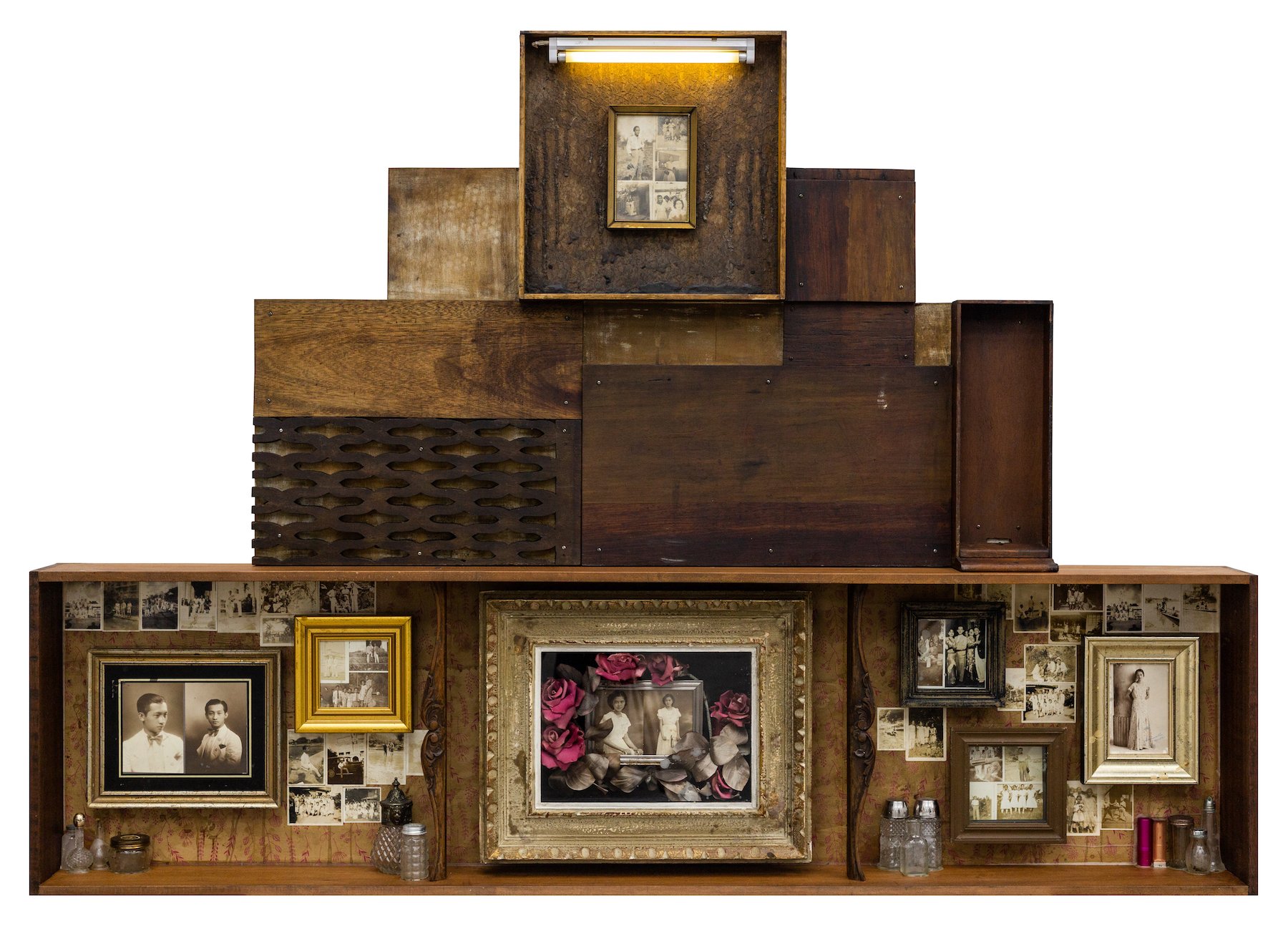Objects in Art Space: Exhibits in June 2023
Art+ rounds up prominent shows in the month of June.
Written by Amanda Juico Dela Cruz
Photos provided by the galleries and museum
June 30, 2023
Art-making is not mere copying of the real world through paints on canvas. Fashion could be a character as much as a setting in performance art. Everyday objects placed in an exhibition space for an artistic intention become works of art. Portraying one’s mental health struggles and translating a devotional image from one form to another is not just an expression of one’s self or a form of devotion respectively because the process of coming up with these works of art—the artistic process—is equally significant to the art-makers sense of liberation.
Fluid Transitions, a collaborative work between Lilibeth Cuenca Rasmussen and Shone Puipia. ATT19 Bangkok, Thailand, 4-5 May 2023. Photo by Ken Thaodee. Courtesy of Belarmino_Partners
Lilibeth Cuenca Rasmussen and Shone Puipia, “Fluid Transitions”, Ateneo Art Gallery.
The performance artist in a red coat like a voluptuous fur coat except that it was made of cloth strips descended the staircase. Walking further, spiraling into the center, she held her coat over her head revealing a red blazer over a fiery orange dress. She kept spinning until she let go of it which landed on the floor. Later, she took off the Chinese collar red blazer and then the dress that mimicked the palette of sunset until she was left with a white top with vertical cutouts, red leggings, and red boots. Each layer of clothing doubles as her character.
“Shrines”, Silverlens Galleries.
Norberto Roldan 100 Altars for Roberto Chabet NO. 26_2014-2020
Agimat. Bulul. Scapulars. Hair and bone. Litany. Iconographies familiar to the Filipino psyche—to the Filipino folk religions—are the central elements in the works of art in this exhibition. Diaspora. Itinerancy. Retreat. The artists in this group show draw from the context of migration. The translation of these belief systems into their works of art is interlaced with their personal histories reminiscent to how pre-colonial ancestors created their own anitos in their own houses. Spaces for worship and for prayer are built, and altars that were considered as shrines for reverence were built within the proximity of one’s home. The group show exhibits work from Catalina Africa, Poklong Anading, Santiago Bose, Stephanie Comilang, Chati Coronel, Kawayan de Guia, Patricia Perez Eustaquio, Lani Maestro, Wawi Navarroza, Gina Osterloh, Gary-Ross Pastrana, Norberto Roldan, Judy Freya Sibayan, Carlos Villa, Ryan Villamael, and Eric Zamuco.
Jasper Castro, “The Artist is Alive”, NCCA Gallery.
Installation shot of “The Artist is Alive” in NCCA Gallery
Unlike Van Gogh and his fellow male artists whose mental health struggles added depth to their works of art which resulted to more of a romanticization of their struggles, women artists before the 70s experienced something akin to witch hunting and burning at the stake. Hysterical. Fragile. Emotional. These description of a madwoman are challenged by the artist in her feminist portrayal of a woman artist struggling with bipolar disorder. Trigger, Mania, Depression, Respite, and finally Liberate. She makes sure to not fall into the trap of romanticization as her art-making traverses through her survival, rebirth, and of course hope.
Annie Pacaña, “from-out-there-toward-me-and-through-me”, UP Vargas Museum.
Images of moving vehicles, bustling urban centers, sprawling malls, and towering skyscrapers are stripped away in the installations. Instead, what is seen are the repetitive textures and the fast and uncontrollable rhythms that have become mundane as they are perpetually present to stimulate one’s senses—sights, smells, and sounds—as one navigates urban daily life. Using windshields, side mirrors, and television screens, the artist used these elements of capitalist cities as intermediaries, a reminder that what one senses is their own experience. The installations are not visions of the world but a way to reacquaint what goes unnoticed.
Celline Mercado, Wika Nadera, Foraime Pantaleta, Augustine Paredes, Matina Partosa, Judy Freya Sibayan, and Constantino Zicarelli, “object orientations”, Gravity Art Space.
Installation by Wika Nadera in Gravity Art Space
Tangible things found everyday such as fabrics and nets, doormats and metal frames, decorative blocks, stand-in cardboards and scapular necklaces, and game cards and beer bottle are brought to the exhibition space to challenge the conventional understanding of “art objects.” Works of art that incorporate texts are also included in the show. The works of art invite the viewers to meditate of how one understands these objects beyond their inherent day-to-day function, how these objects with a fixed identity and essence once they are used in art-making, how when the artists breathe life into these works rendering them with artistic autonomy.
Claude Tayag, “Imahen”, BenCab Museum.
Imahen by Claude Tayag installation3 in Ben Cab
Filipino santeros draw their carvings from estampas or printed engravings of devotional images. They take only the figure and the ground in their sculptures of the images, failing to bring to their works the spatial volume and dimensionality found in estampas. Yet, this “shortcoming” make their works distinct from other traditions. The artist started from where the santeros end: from free-standing models, he translated them to watercolor. Like the early santeros who had limited copies of estampas, the watercolor artist limited himself with existing santos. The act of “copying” them with minimal intrusion to the copied image was ironically liberating.






